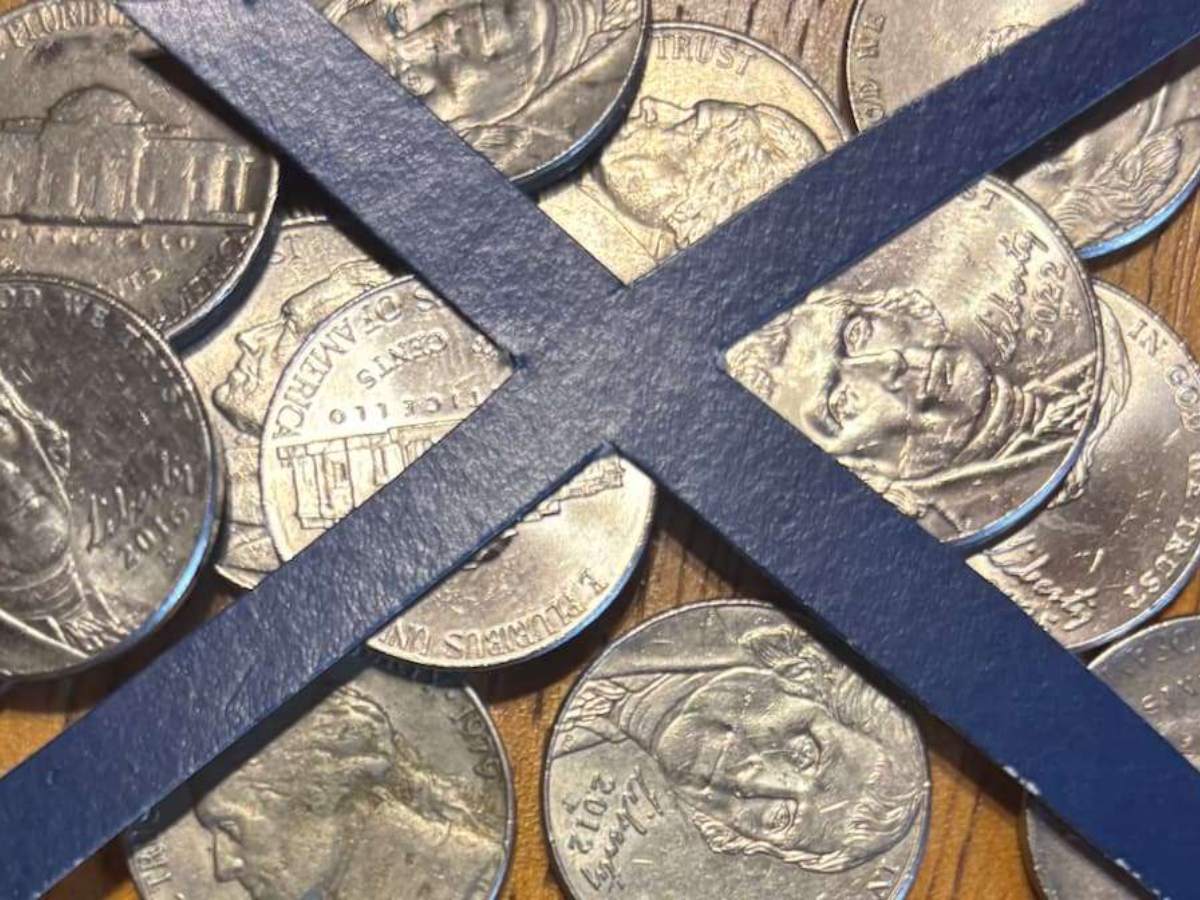
Did you find a 1925 penny?
If so, consider yourself lucky, as these old pennies are becoming very difficult to find in circulation!
But just because 1925 Lincoln wheat cents are scarce in pocket change, does this mean that all 1925 pennies are rare?
What is a 1925 wheat penny even worth today?
In this post, you’re going to find:
- Values for all 1925 pennies
- What the most valuable 1925 wheat penny is
- Which 1925 Lincoln cents are worth holding onto
- How many 1925 pennies were made
- Errors to look for on a 1925 penny
- Fun facts about 1925 wheat pennies
How To Determine Your 1925 Penny Value
Knowing how much your 1925 Lincoln cent is worth is a matter of determining the following:
- Where was your wheat penny minted?
- What’s the condition (or grade) of your coin?
- Does it have any errors?
First things first, let’s figure out where your 1925 penny was minted…
What Mintmark Is On Your 1925 Penny?
Do you see a mintmark under the date of your penny? (A mintmark is a little letter on Lincoln pennies that will tell you where the coin was made.)
In the case of a 1925 wheat penny:
- If you see no mintmark, it was made at the Philadelphia Mint.
- A “D” mintmark means your penny was struck at the Denver Mint.
- An “S” mintmark means it was produced at the San Francisco Mint.
Knowing the mintmark is important because it gives you a rough idea as to how scarce your coin is. You see, each mint made a different number of 1925 Lincoln cents — and some are much more difficult to find in top condition than others.
Must read: What’s The Difference Between Rare Coins And Scarce Coins?
What Condition Is Your 1925 Penny In?
That takes us to the next important factor in determining a coin’s value: the grade, or condition.
Grab a coin magnifier and a copy of the U.S. Coin Grading Standards book. Then, watch this video to see how to grade coins yourself at home:
1926 Penny Values Guide
All 1925 wheat pennies are pretty common in well-worn condition. It’s the pennies that have only light wear or are in mint condition (uncirculated) that are really scarce!
Here’s a rundown on how much 1925 Lincoln wheat cents are worth in both worn and uncirculated condition:
- 1925 no mintmark penny (Philadelphia Mint) — 15 to 50 cents in worn condition; $10+ in uncirculated condition
- 1925-D penny (Denver Mint) — $2.50 to $15 in worn condition; $50+ in uncirculated condition
- 1925-S penny (San Francisco Mint) — $1.75 to $12 in worn condition; $100+ in uncirculated condition
Values above are for problem-free coins that have NOT been cleaned, have holes, heavy nicks or scratches, or exhibit other types of damage. Damaged and cleaned coins are worth much less.
Which 1925 Pennies Should You Keep?
Essentially, all 1925 Lincoln cents are worth more than face value — so, it’s wise to hang on to any 1925 pennies that you find.
Again, the key is looking for old pennies that are in the best state of preservation you can find. The less wear it has, the more that coin is worth.
You should also keep your eyes peeled for any 1925 wheat pennies with mistakes or design oddities. These are what collectors call errors and varieties.
Let’s talk about that next…
A List Of 1925 Wheat Penny Errors
Remember I said errors are another factor to a coin’s value? Well, not all Lincoln cents were made correctly — and coins with errors are worth at least a little (and often a lot) more money! Coin collectors treasure the little mistakes that pop up on old coins from time to time.
Here’s a look at what some of 1925 error coins are worth…
1925 Penny With Missing Letters
Generally speaking, a lot of these old pennies are heavily worn and are only missing letters because of their excessive wear. But a few of them may have been struck by coin dies that were partly filled with grease or other foreign matter.
Such grease-filled die errors can be worth $50 to $100 or even more.
If you see a 1925 wheat cent with missing letters, it’s best to get it looked at by a numismatic professional (such as a seasoned collector or coin dealer) — because these types of errors can really only be vetted by seeing the coin in hand or perhaps having a really clear photo of it.
1925 Penny Struck On The Wrong Metal
These are especially rare errors. In the case of a Lincoln cent, it’s most likely that an off-metal planchet error will be a dime.
There aren’t too many 1925 Lincoln cents struck on dime planchets, so the value is sketchy — but similar pieces are worth anywhere from $500 to $1,000 or more!
1925 Penny Struck Off-Center
These cool errors show part of the design missing — as if it would be hanging off the side of the coin (if only you could see the design floating in thin air alongside the coin)!
The value of an off-center error coin is largely dependent on how much of the design is missing and if the date is still visible.
The general rule of thumb for off-center strikes is the more off-center the design is (so long as the date is still fully legible), the better for the coin’s value.
1925 off-center pennies range in value from $5 to $10 for a minor off-center error (5% to 10% off) to several hundred dollars (for an example with the strike off by more than 50%).
A List Of 1925 Wheat Penny Varieties
A variety is a little bit different from an error:
- Errors are caused to the coin when something goes wrong in the striking process or other parts of an individual coin’s manufacture.
- Varieties are made to the basic design of a coin and are replicated across several specimens — maybe even hundreds or thousands.
Here are some 1925 varieties to watch for…
1925 Doubled Die Penny
One of the most popular varieties on Lincoln cents is the doubled die. And 1925 doubled die pennies are especially scarce!
One of the more well-known examples of a 1925 doubled die shows an extra eyelid near Lincoln’s eye.
These particular pieces don’t trade in the market very often — but similar doubled dies often sell for $50 or more.
1925 Penny With Repunched Mintmarks
There are repunched mintmark varieties known to exist for both the 1925-D penny and the 1925-S penny. These types of varieties are prized by Lincoln cent enthusiasts — most particularly those who specialize in die varieties.
Values for repunched mintmarks on the 1925 Lincoln cent vary from example to example, with higher prices paid for the more drastic examples. Generally speaking, repunched mintmarks range in value from about $5 to $20.
1925 Penny With Die Breaks Or Die Cracks
These types of varieties are more indicative of the state of the die (a.k.a. metal stamping tool).
Die breaks normally happen to overworked, overstressed dies or coin dies that are older. Die cracks (or die breaks) can normally be seen progressing from minor to more severe before the die either shatters or is replaced with a fresh die by a mint employee.
In theory, one could collect a series of individual coins struck by the same die showing stronger evidence of the die crack becoming more pronounced. As such, die breaks are valued based on their location, size, and overall prominence. Some die breaks are so minor that they may not have any extra value.
For the most part, a coin with any die break on any part of that coin is worthy of holding onto — because all die cracks are relatively scarce.
For minor die breaks, the value will likely range from $5 to $15, while more significant die breaks can fetch $100 or more.
These rules go out the window for popular die breaks that are widely collected. For example, we saw this with the 1999 Spitting Horse Delaware quarter, in which the size and location mattered as did the popularity of that variety. After their discovery, some examples of this coin sold for hundreds of dollars!
Fun Facts About 1925 Wheat Pennies
There’s a lot of neat stuff you can learn about old Lincoln pennies.
Here are a few cool facts about these old coins. Maybe you will impress a few people with your Jeopardy-like knowledge of Lincoln pennies!
How Many 1925 Wheat Pennies Were Made?
A cumulative total of 188,909,000 Lincoln cents were made across the Philadelphia, Denver, and San Francisco Mints. This breaks down to the following:
- Philadelphia — 139,949,000 minted
- Denver — 22,580,000 minted
- San Francisco — 26,380,000 minted
When Were Lincoln Pennies First Struck?
The first Lincoln cents were made in 1909.
The wheat ears design that you see on the tails side (or reverse) of the 1925 penny was used until 1958. The wheat stalk design was replaced in 1959 by the Lincoln Memorial design.
What’s The Most Valuable 1925 Penny?
The most expensive 1925 wheat penny ever sold is worth a pretty penny indeed!
In 2009, an MS-67 Red example of a 1925-D penny certified and graded by Professional Coin Grading Service (PCGS) traded hands for a whopping $74,750!
What’s The Little VDB Under Lincoln’s Shoulder?
Look under Lincoln’s shoulder on any penny made since 1918 and you’ll see 3 tiny letters spelling VDB. What do those letters mean?
A famous sculptor named Victor David Brenner designed the Lincoln cent — the VDB are his initials!
Originally, the VDB appeared on the reverse side of some 1909 pennies, but they were removed because some folks thought they were too large. They were eventually restored to the coin in a more obscure place under Lincoln’s shoulder, where they remain today.
While the original wheat design is no longer found on modern pennies, his Lincoln head design on the heads side (or obverse) of the coin has remained virtually intact since 1909!




